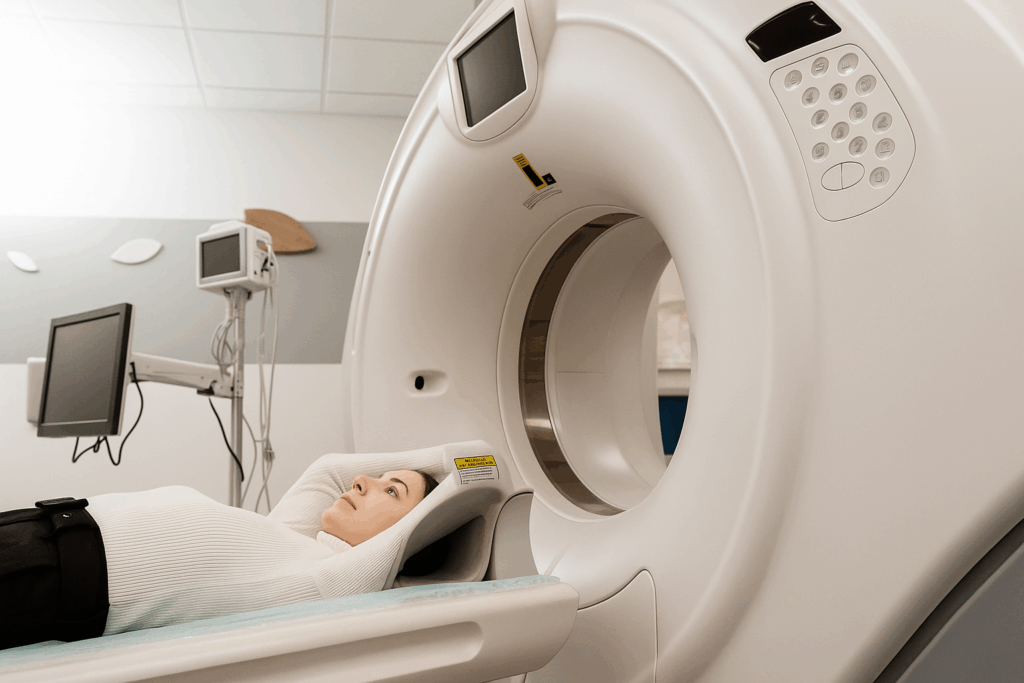In today’s healthcare landscape, where precision, safety, and efficiency matter more than ever, advanced training tools play a crucial role. Among these tools, a CT simulator actively transforms how radiographers and medical students receive training across the globe. By offering a realistic, interactive, and radiation-free environment, CT simulation directly enhances radiology education—making it safer, smarter, and more accessible.
As a result, CT simulation makes radiology education not only safer but also smarter and more accessible than ever before. Moreover, this technology gives trainees the opportunity to gain hands-on experience without exposure to harmful radiation. In doing so, it strengthens their skills and boosts their confidence in real-world clinical scenarios.
Understanding the Role of a CT Simulator in Modern Medical Education
A CT simulator uses software or hardware to replicate the CT scanning process without exposing students to actual radiation. Therefore, simulation healthcare environments widely use it to teach students how to position patients, select scan parameters, and interpret CT imaging—all while avoiding the risks associated with radiation exposure.
Moreover, these simulators often include digital interfaces and even physical mannequins to mimic real-life clinical scenarios. This allows learners to perform simulation experiments and repeatedly practise technical procedures with zero risk, enabling a deeper and safer learning experience.
Why Radiation-Free CT Simulators Are a Game Changer
The introduction of the radiation-free CT simulator has revolutionised how radiology training is delivered. In the past, traditional training required real CT machines and often relied on volunteers or patients, raising concerns over radiation exposure, limited machine availability, and clinical disruptions.
Now, with radiation simulation handled entirely by virtual technology, students can learn at their own pace, repeat exercises, and familiarise themselves with equipment without needing access to actual machines. As a result, these simulators reduce operational costs for institutions and eliminate the ethical concerns of exposing patients or learners to unnecessary radiation.

Next-Gen AI-Based CT Simulators: The Future of Learning
The latest next-gen AI-based radiation-free CT simulators. They are powered by intelligent algorithms that provide real-time feedback, adaptive case scenarios, and virtual error correction. These features significantly enhance learner engagement and competence.
One such innovation is the Radiology Simulator is, a cutting-edge platform developed to meet. The needs of modern medical education, especially in resource-constrained settings. It offers immersive training using realistic anatomy, interactive interfaces, and cloud-based access, allowing learners to train from anywhere.
India’s Leadership in Simulation-Based Training
The role of radiation-free CT simulators in India is increasingly critical as the country works to bridge the gap between growing demand and limited clinical infrastructure. In particular, many medical colleges and hospitals lack adequate training access to CT machines. Therefore, simulation-based tools are helping democratise learning by providing students with equal opportunities to develop essential radiology skills in a safe and controlled environment.
Moreover, these simulators are not only improving the quality of radiography training but are also helping reduce the workload on clinical equipment and personnel. Consequently, the future of CT education in radiographer training is being reshaped, with India emerging as a leader in simulation-driven education.
Conclusion:
CT simulation is no longer just an alternative; instead, it’s becoming the foundation of radiology education. Thanks to advancements in AI simulation, realistic CT healthcare environments, and highly detailed CT imaging scenarios, medical institutions can now train students in a more effective and safer manner. As a result, more institutions are adopting platforms like Radiology Simulator Connect. Ultimately, the future of healthcare education looks smarter, safer, and globally aligned with best practices.
